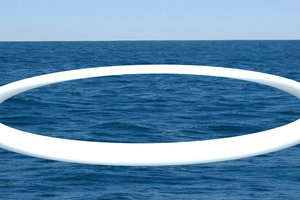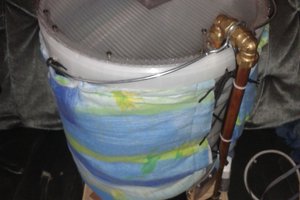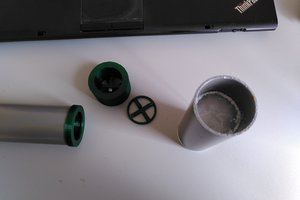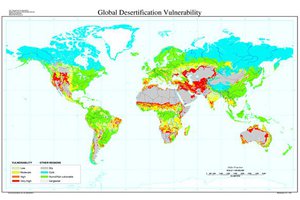Unlike an igloo, which is made from air-filled and lightweight snow, this dome is made from ice, heavy, structural and able to support large loads, including its own weight. And since it is much more dense than snow, it can last a lot longer than an igloo, when below-freezing temperatures are sustained. It can also tolerate fairly large excursions into above-freezing ambient temperature, due to the large thermal mass of the ice. A little melting and re-freezing actually causes the panels to weld together, making the entire structure stronger.
This project was attempted to understand the practical difficulties with building such a structure, and to begin to understand some of the issues involved with scaling a structure like this to larger sizes.
In a seasonal situation (meaning, a location with both above- and below-freezing temperatures during the year), there is a certain minimum wall thickness that can be built, such that the warm weather cannot melt the structure entirely, before freezing weather returns. This project does not test that. That minimum thickness is too large to be practical in my location.
In an environment such as the Antarctic, where freezing temperatures can be sustained, melting is not the enemy - though a dome may be slowly eradicated by wear from wind and through sublimation. This project does not test that, either.
Thuban is a star in the constellation Draco, used in ancient times as the North star. It would have been fun if tolerances allowed this structure to be aligned with the motion of this star, but that was not the case. The name was chosen to point out that this is not Ice Station Thula.
The resulting dome was about nineteen feet in diameter, nine feet in height. The triangular panels were approximately three feet on a side, and weighed about sixty pounds each. Approximately two tons of water were self-suspended above the ground with no other materials present (other than water impurities and tiny windblown objects - no reinforcing structure). The dome was assembled over a period of three weeks when temperatures almost remained below freezing (there were a few excursions into above-freezing temperatures, no problem). It lasted about three days above freezing before the top collapsed in, and melted entirely over a period of another three weeks.
This is an ongoing project, because there is a version 2. To be continued...
 Kenji Larsen
Kenji Larsen




 Anteneh Gashaw
Anteneh Gashaw
 Morning.Star
Morning.Star
 Tom
Tom
 Danny
Danny